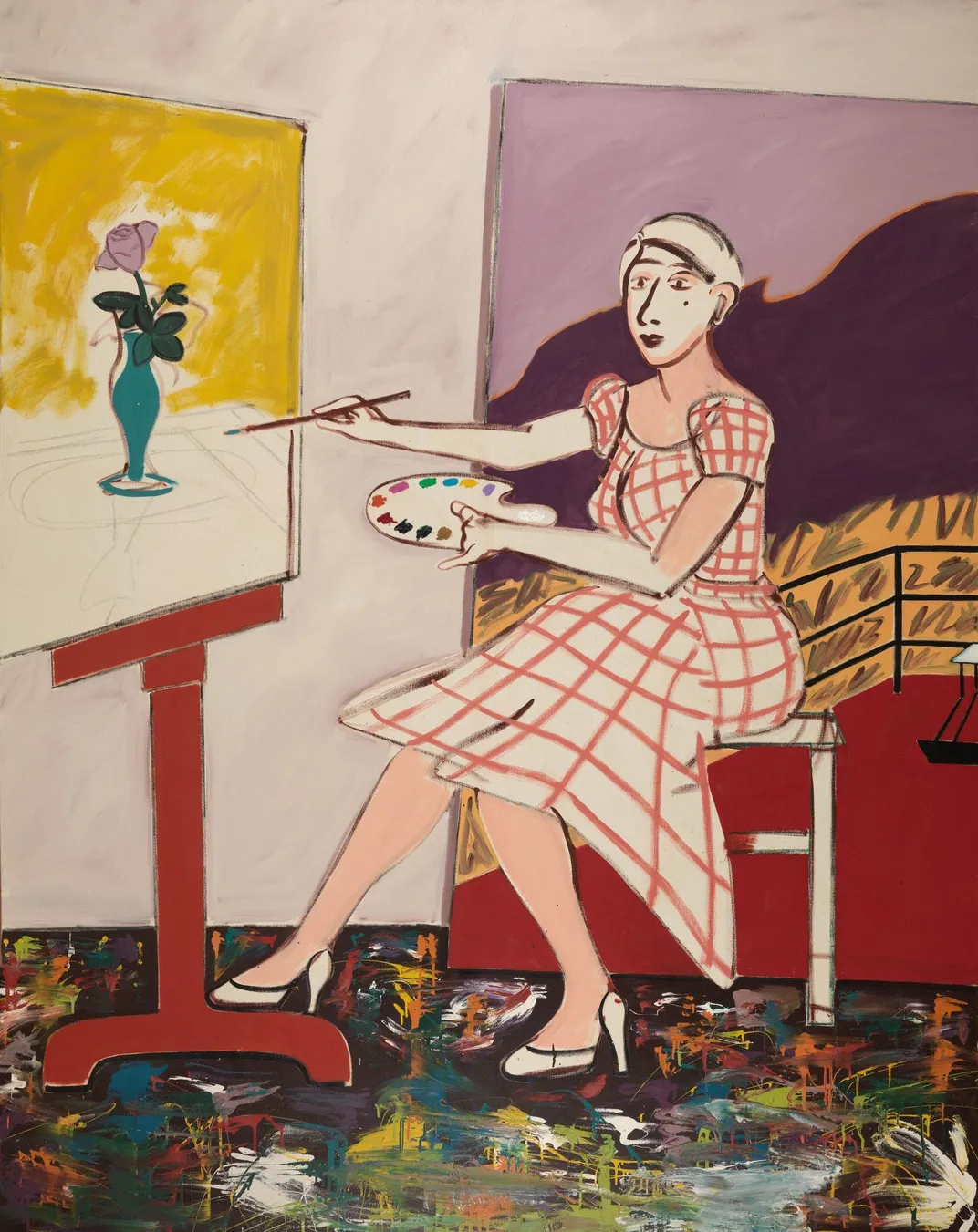Study Shows U.S. Museums Still Lag When It Comes to Acquiring Works by Women Artists
Between 2008 and 2018, artwork by women represented just 11 percent of acquisitions and 14 percent of exhibitions at 26 major museums
/https://tf-cmsv2-smithsonianmag-media.s3.amazonaws.com/filer/f9/06/f9064bb1-f279-4bff-918b-f441604032a8/david_heald.jpg)
A joint investigation conducted by artnet News and In Other Words paints a stark portrait of gender parity in American museums. As a summary of the findings states, works by women constituted just 11 percent of acquisitions and 14 percent of exhibitions at 26 major American museums between 2008 and 2018.
Crucially, Julia Jacobs points out for the New York Times, the data stands in sharp contrast to museum rhetoric touting increased diversity in collections and programming: In fact, the survey found, acquisitions of art by women peaked a decade ago and have remained largely stagnant ever since.
“The perception of change was more than the reality,” Julia Halperin, artnet News’ executive editor and one of the report’s two lead authors, tells Jacobs. “The shows for women were getting more attention, but the numbers actually weren’t changing.”
Per an analysis written by Halperin and Charlotte Burns, executive editor of In Other Words, only 29,247 of 260,470 works added to the selected museums’ permanent collections over the past decade were made by women. Given the fact that women make up more than half of the United States’ population, the report deems this figure “disturbingly low”—essentially a fifth of what one would expect based on the country’s demographics.
According to a breakdown of the investigation’s methodology, chosen institutions vary in terms of budget, location, focus and attendance. Among others, the list includes New York’s Museum of Modern Art, the Smithsonian’s American Art Museum, the Cleveland Museum of Art, the Brooklyn Museum, the Dallas Museum of Art and the Museum of Contemporary Art Chicago.
As Jacobs writes, factors driving museums’ gender imbalance include acquisition committees’ emphasis on name recognition, donor biases and male artists’ longstanding dominance in the art world canon. Although the survey notes that larger museums with sweeping purviews (think the Metropolitan Museum of Art and the Museum of Fine Arts in Boston) tend to collect fewer works by women than those with a contemporary or modern focus, there are exceptions to this rule: most prominently, the Los Angeles County Museum of Art, which spans 6,000 years of creative pursuits.
In a case study of the California museum, Halperin and Burns point out that 16 percent of LACMA’s acquisitions over the past decade were works by women. At the San Francisco Museum of Modern Art and MoMA, the proportion of comparable acquisitions numbered 12 percent and 23 percent, respectively.
Michael Govan, LACMA’s director, attributes much of this progress to curators, explaining that a shift in thinking is most evident when “you look at what the curators are presenting for acquisition versus the gifts we get.” In the past five years, Govan says, 70 percent of items proposed for acquisition by contemporary works curators were by female artists; 35 percent of proposed historical works over the same period were also by women, including 17th-century Spanish sculptor Luisa Roldán, Renaissance portraitist Lavinia Fontana and photographer Julia Margaret Cameron.

Another museum highlighted in a case study—New York’s Solomon R. Guggenheim Museum—earns plaudits for its risk-taking exhibition on Swedish spiritualist Hilma af Klint. While Guggenheim director Richard Armstrong tells Halperin and Burns he “thought people would be unhappy they weren’t coming to a Klimt show,” the show exceeded all expectations, drawing more than 600,000 people and becoming the Manhattan institution’s most-visited exhibition of all time.
“The excuses people give really tells us a lot about the power of art and the difficulty people have with change,” says Susan Fisher Sterling, director of Washington, D.C.’s National Museum of Women in the Arts. “We are lulled into a sense that parity is being achieved faster than we think, but those myths reflect the status quo.”
Interestingly, Jacobs writes for the Times, smaller institutions featured in the survey often demonstrated greater progress than larger, better-known ones. The Pennsylvania Academy of the Fine Arts, for example, upped its acquisitions of works by women from 21 in 2008 to 288 in 2018. Much of this uptick in representation stems from the museum’s deaccessioning of an Edward Hopper painting in 2013; thanks to the $36 million garnered from this move, PAFA gained the funds needed to purchase works by female artists such as Joan Brown, Rina Banerjee and Elizabeth Okie Paxton.
The practice of deaccessioning works by male artists to buy works by women or underrepresented groups is a controversial one: As gallerist Dominique Lévy says, “I’m worried the focus is skewing things to the point where we end up looking at artists in a gendered way rather than in terms of quality.” Proponents of the approach, however, emphasize the urgent need for better representation. Christopher Bedford, director of the Baltimore Museum of Art—which has sold works by white men in order to diversify its collection, as well as announced a 2020 lineup dedicated entirely to female artists—argues, “The only way to catch up with decades of negligence is to be overly aggressive in the present.”
Museums aren’t the only art world bastions struggling to achieve gender equality: According to a separate analysis also conducted by Halperin and Burns, women represent just 2 percent of the global art market, accounting for $4 billion of the more than $196.6 billion spent at art auctions between 2008 and May 2019. For context, consider the fact that Picasso paintings sold over the same period generated $4.8 billion at auction, or more than the total spent on every female artist (some 6,000 figures) in the team’s dataset.
Mia Locks, senior curator at the Museum of Contemporary Art, Los Angeles, says the first step in “addressing the problem is acknowledging where we actually are rather than where we perceive ourselves to be.”
Only then, she adds, “can [we] begin the real work of change.”
/https://tf-cmsv2-smithsonianmag-media.s3.amazonaws.com/accounts/headshot/mellon.png)
/https://tf-cmsv2-smithsonianmag-media.s3.amazonaws.com/accounts/headshot/mellon.png)